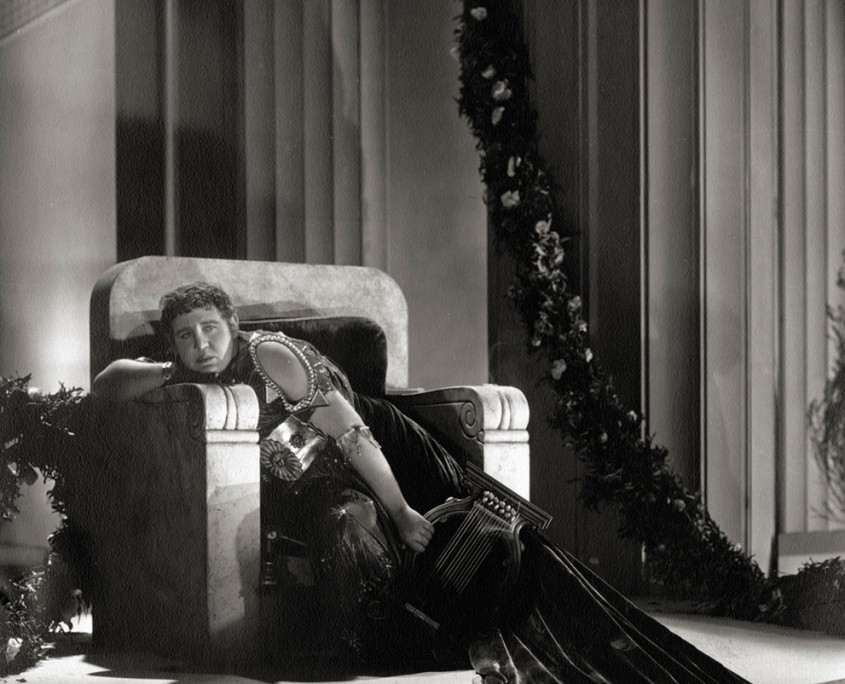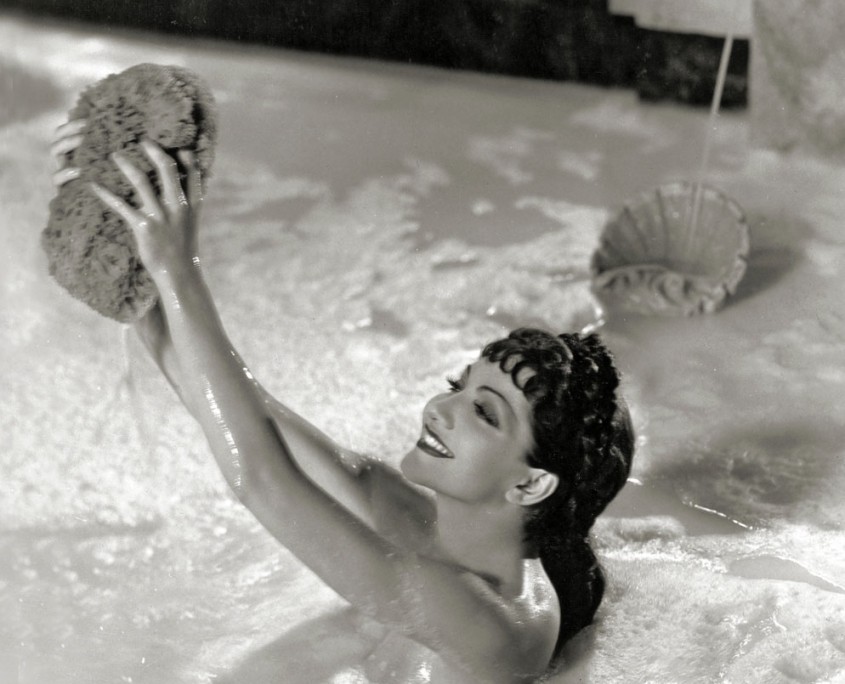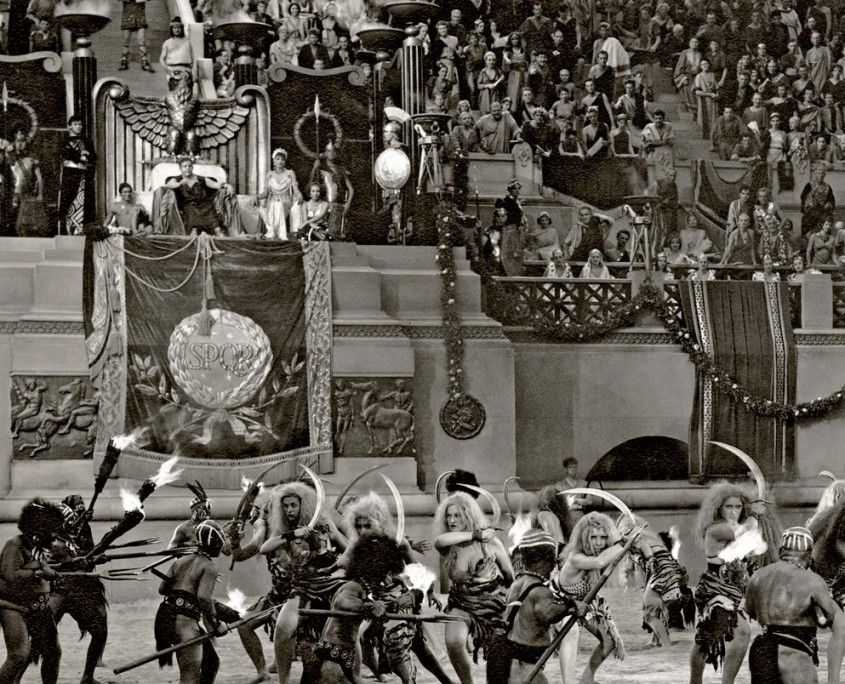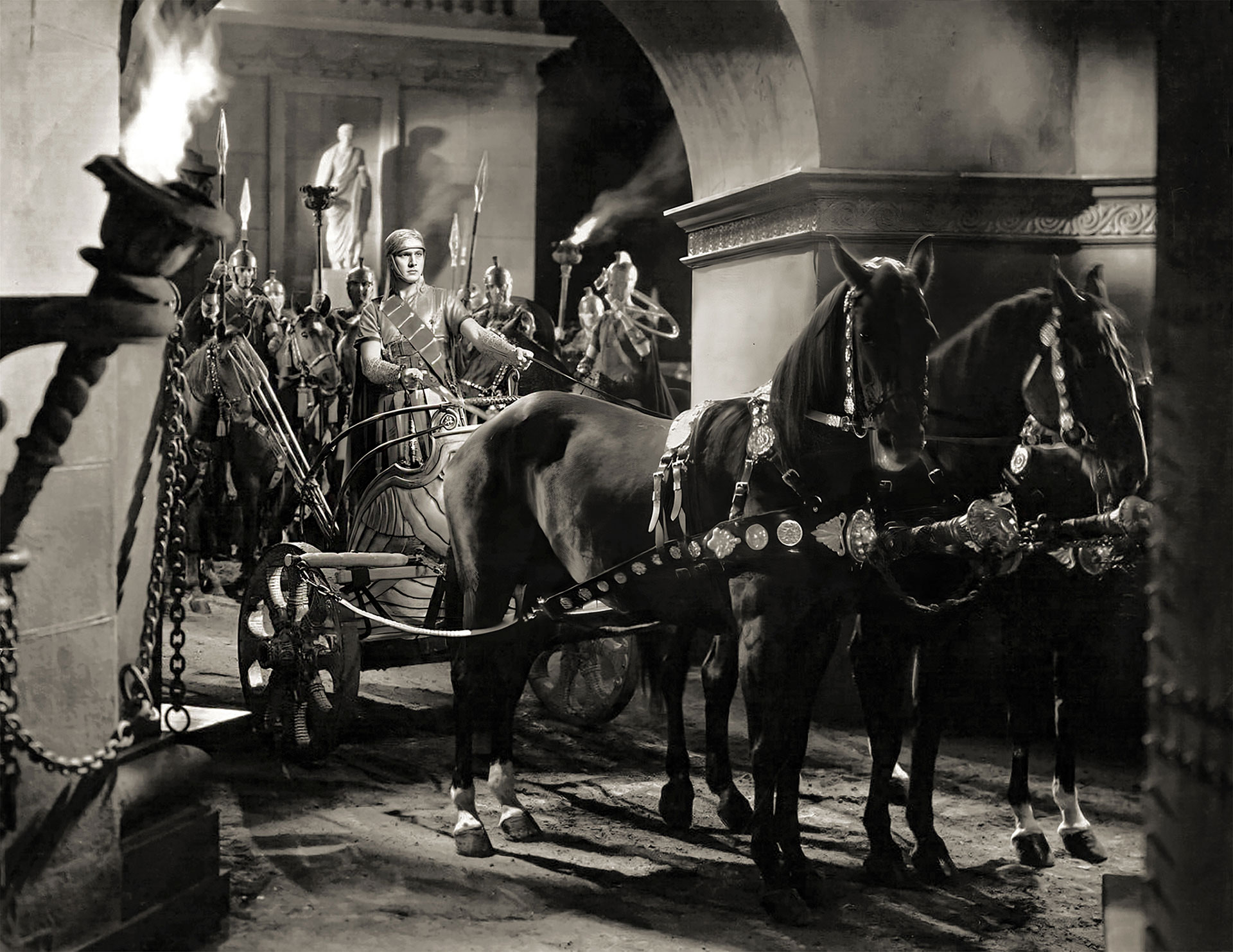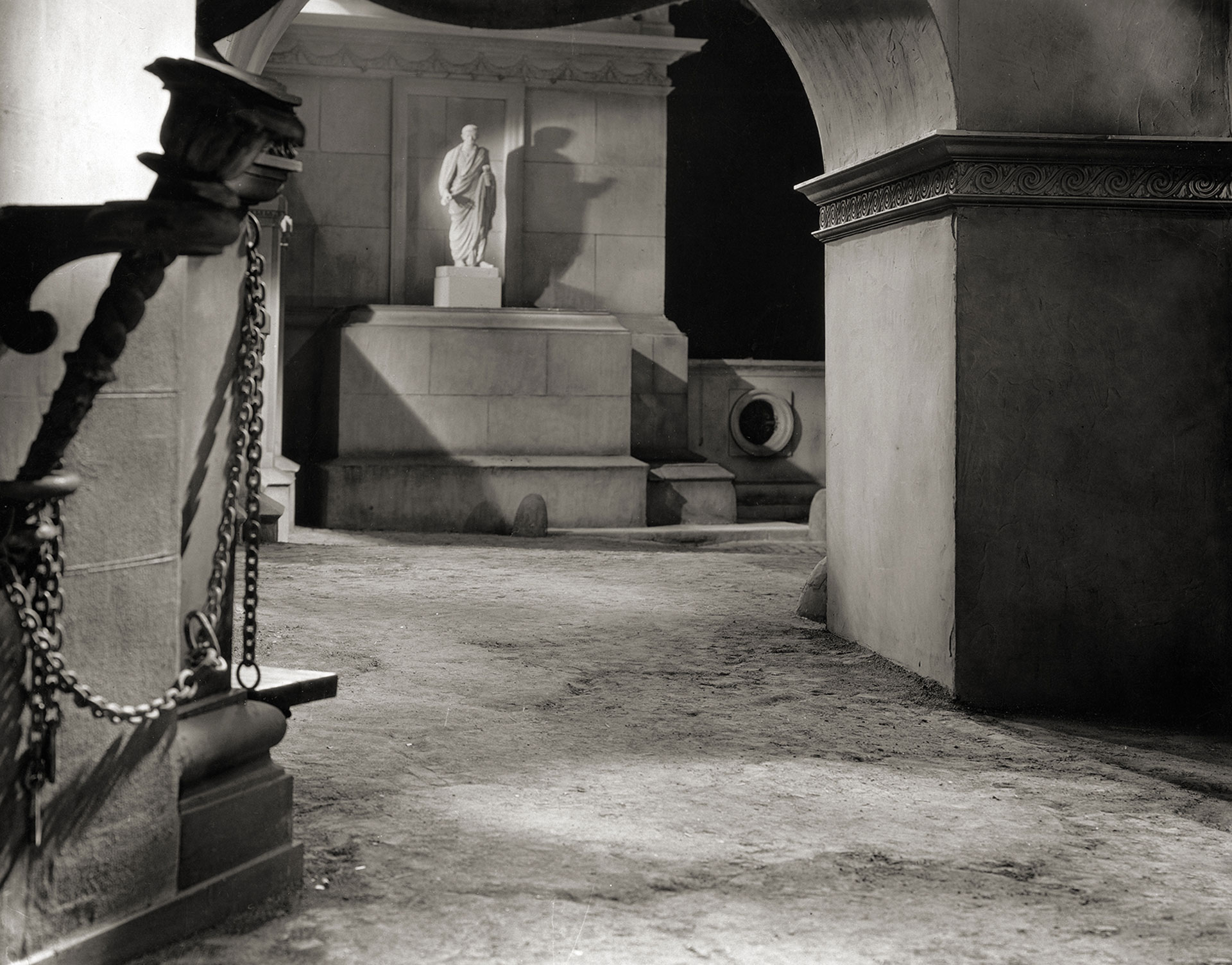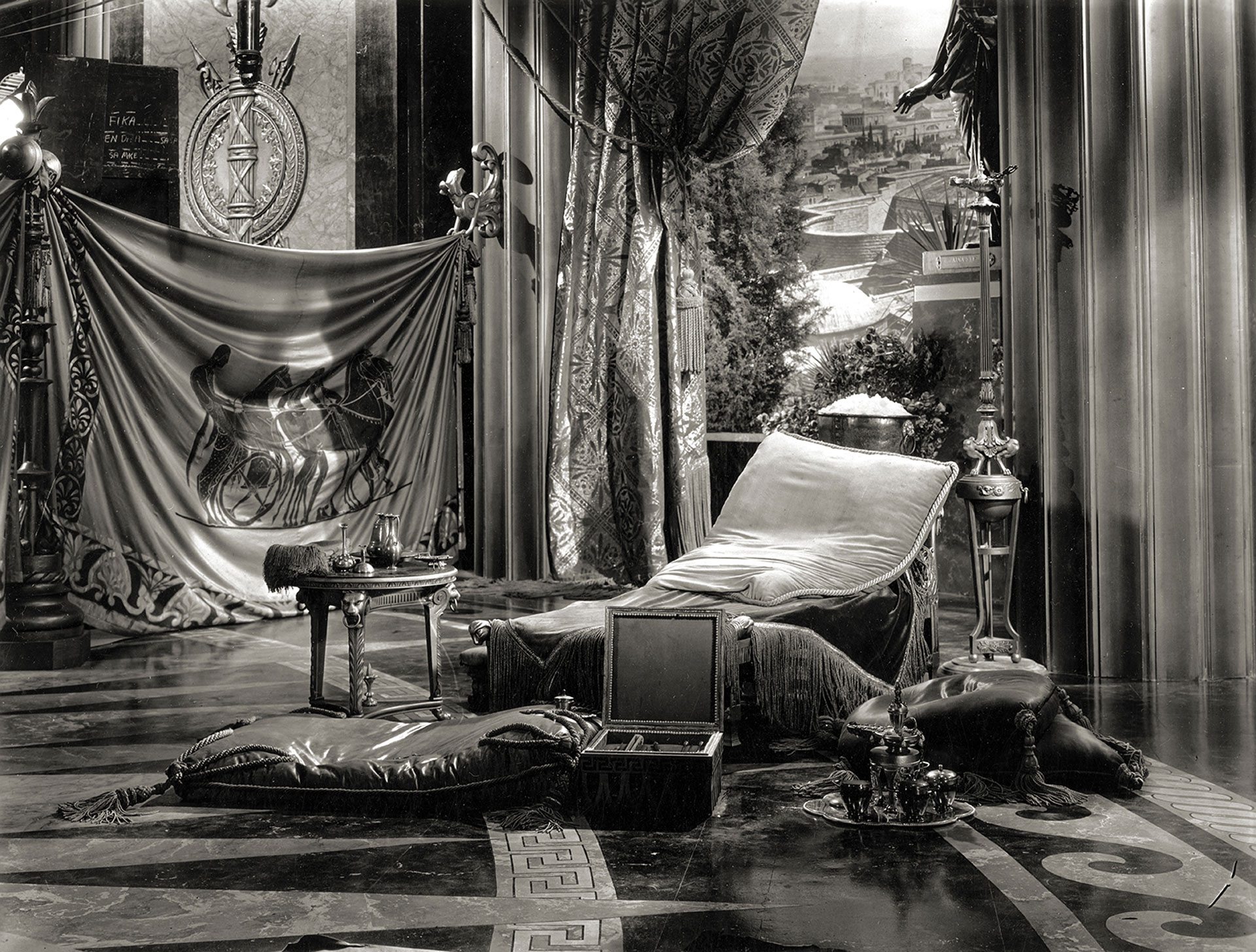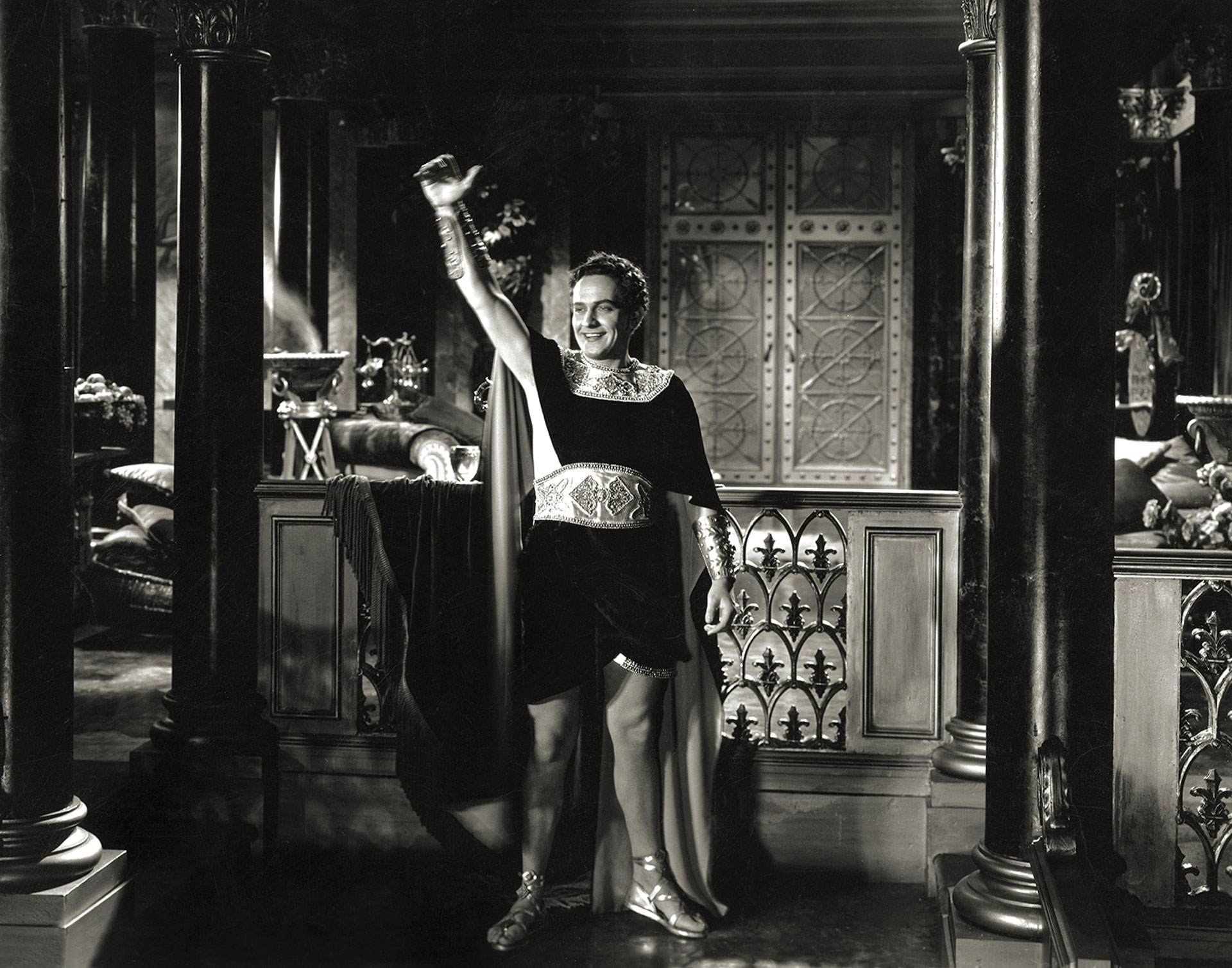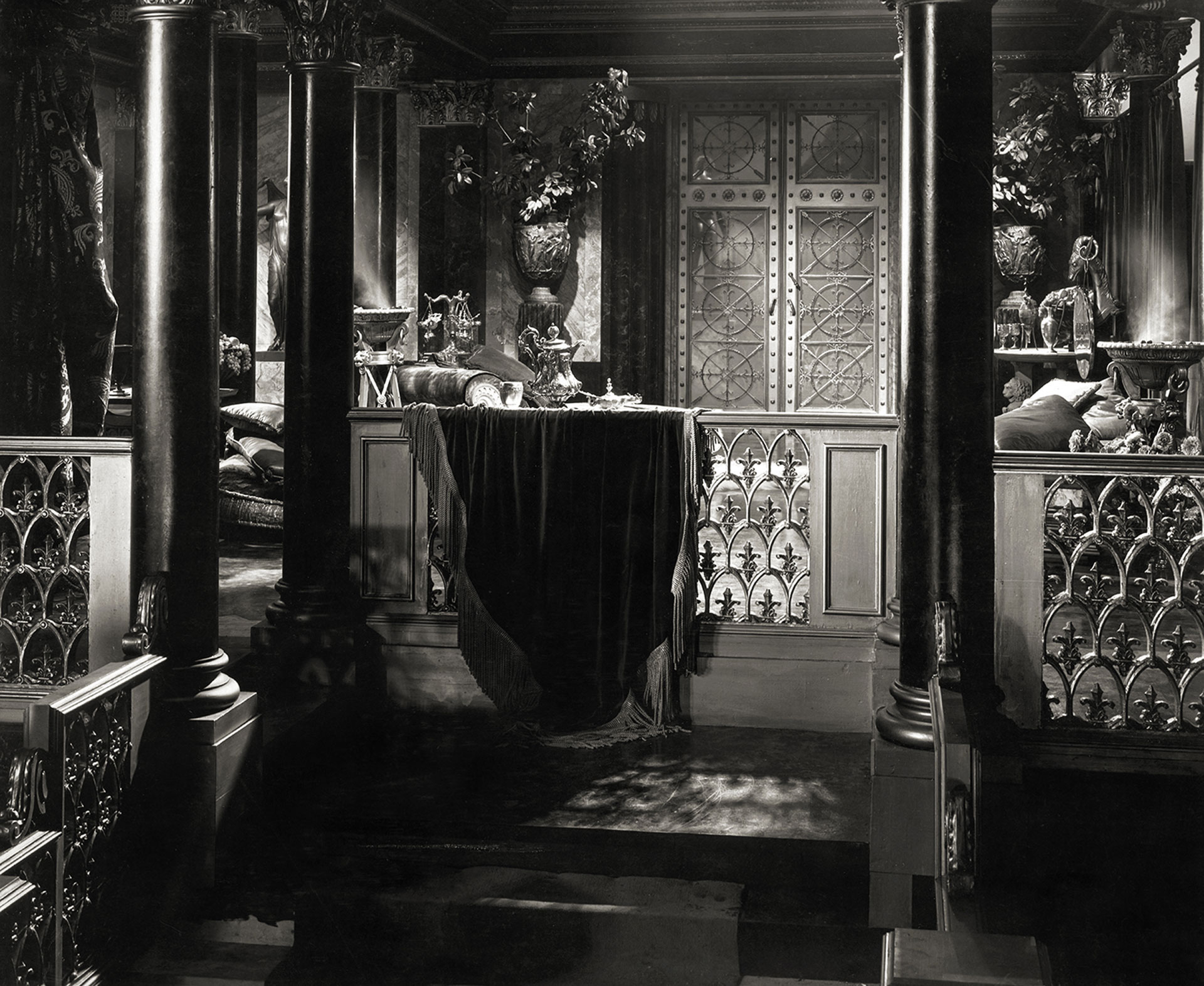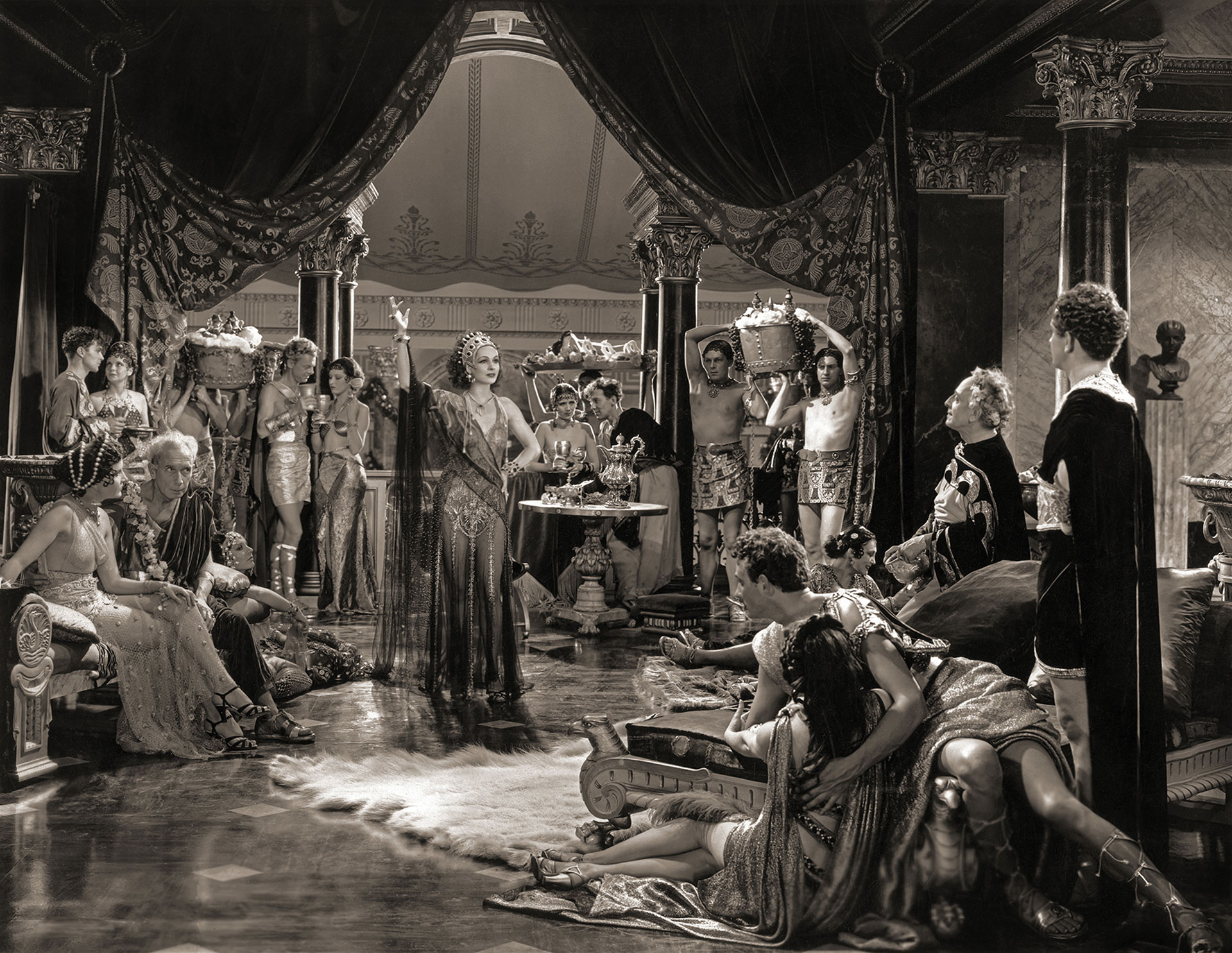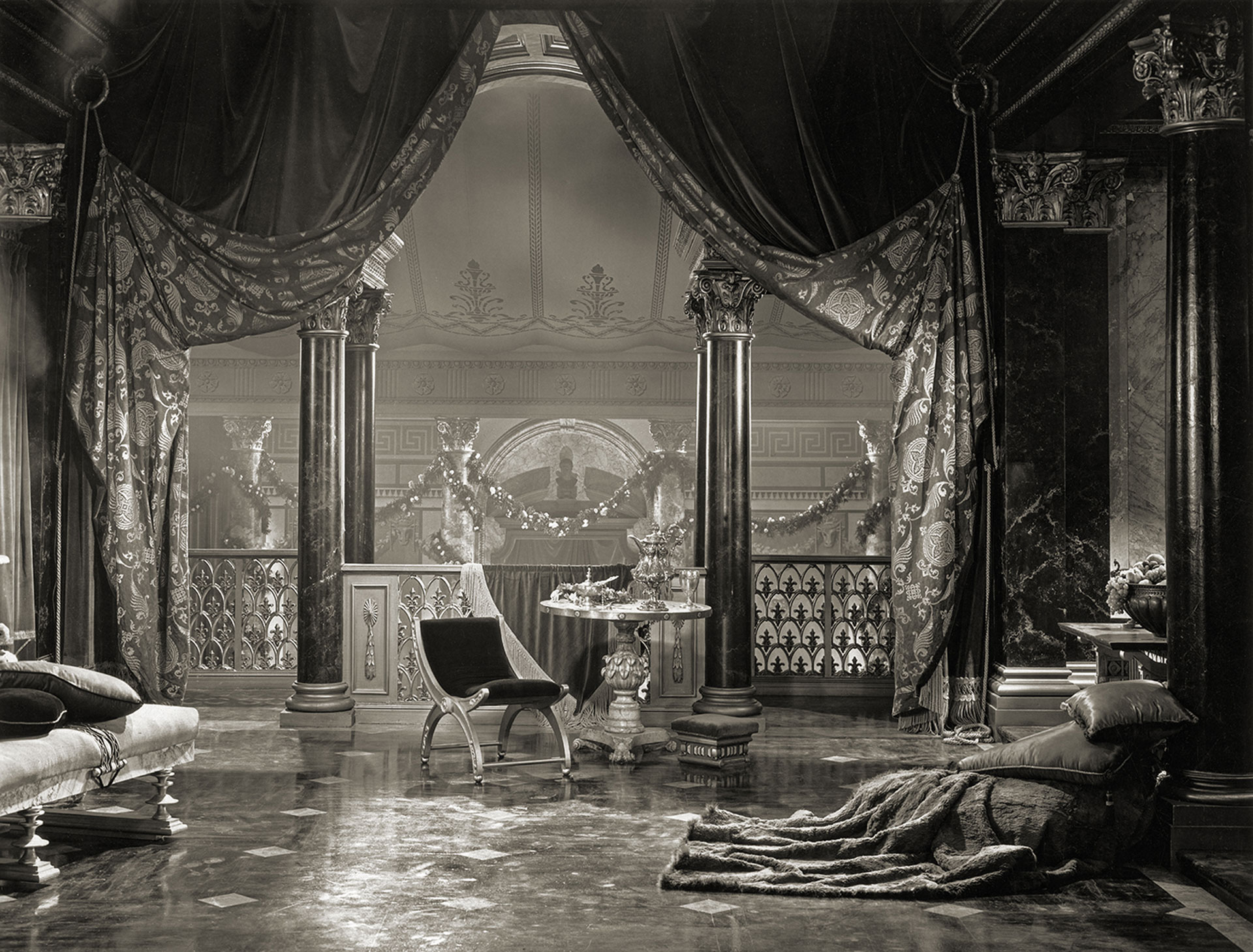Sound Feature: The Sign of the Cross
Set Reference Stills from The Sign of the Cross
Set reference stills were shot immediately after a scene had been filmed so that the art department and set dressers could match the position of props on the next day of shooting. These “set stills” were printed once and then went to the office of Paramount set decorator A.E. Freudeman. The negatives were discarded.
Most set reference stills were utilitarian, but Cecil B. DeMille probably mandated that the Unit Stills Photographer make his set reference stills look like nineteenth-century paintings. Scene stills are provided here to show comparative elements in the set reference stills.
The Roman prefect Marcus Superbus (Fredric March) gathers his troops.
The set after the troops have been filmed departing.
The emperor Nero (Charles Laughton) is being attended by slaves when he hears bad news from Tigellinus (Ian Keith).
The set of Nero’s chambers.
Marcus Superbus greets the guests in his palace.
The palace set was designed by art director Mitchell Leisen.
Marcus and his guests welcome the arrival of Ancaria (Joyzelle Joyner).
The party set was decorated by A.E. Freudeman and his assistants.
Credits
Studio: A Cecil B. DeMille Production
Paramount Publix Corporation
Premiered: November 30, 1932 (New York)
Featured Cast: Fredric March, Elissa Landi, Claudette Colbert, Charles Laughton
Producer-director: Cecil B. DeMille
Screenwriters: Waldemar Young, Sidney Buchman, Nick Barrows
Source: the Wilson Barrett play
Cinematographer: Karl Struss
Art director: Mitchell Leisen, Harold Miles
Assistant director: James Dugan
Music: Rudolph Kopp, with arrangements by Jay Chernis, Paul Marquardt, Milan Roder
Editor: Anne Bauchens
Theme
A Roman prefect defies Nero and Poppaea to save a Christian girl.
Production Quote
“Thirty miles from Hollywood, at Paramount’s ranch in the foothills of the Santa Monica Mountains, history’s most famous conflagration was repeated when a man turned on a gas valve. Gas pipes running through small replicas of Roman structures gave the blaze a quick start. Before the fascinated eyes of hundreds of workmen, flames burst out among the buildings, great billows of smoke rolled skyward, and Nero played. Charles Laughton, armed with a lyre, or ‘fidicula,’ sang an ancient Roman ditty while the flames illumined a face that shone with maniacal ecstasy.”
– “Gas Turned On to Make Rome Burn.” Los Angeles Times, October 16, 1932
Reviews
“The old master returns to form with a sure-fire hit of magnificent proportions which erases memories of The Godless Girl and Madam Satan and restores his name to the roll of honor. Surely DeMille has never staged a spectacle more stately or powerful than his arena sequence nor touched such spiritual splendor as when his hero and heroine walk hand in hand to their death.”
– Norbert Lusk, “DeMille Again the Old Master,” Los Angeles Times, December 5, 1932
Letters From Regional Theater Owners
“Just what you expect from DeMille. It’s the biggest (not the greatest) picture produced in 1932. You can see the master’s hand in directing this spectacle. The cast is excellent, and a mint of money was spent in producing it. I would say that every adult in every community should see it, but unfortunately DeMille or Paramount had to put on another sad ending, which completely kills the picture in a small town.”
– S.H. Rich, Rich Theatre, Montpelier, Idaho, Motion Picture Herald, April 1, 1933
Artist Comment
“Mr. DeMille has been generous to me. He made me the Roman prefect Marcus Superbus in one of the four or five top moneymakers of all time, The Sign of the Cross.”
– Fredric March to Robert McIlwaine, “Talking Things Over,” Modern Screen, January 1938
Figures
The Sign of the Cross cost $694,064.67 and grossed $2,738,993.35.
(These figures have not been adjusted for inflation nor do they include the considerable profits realized from reissues, television syndication, and home entertainment formats.)

